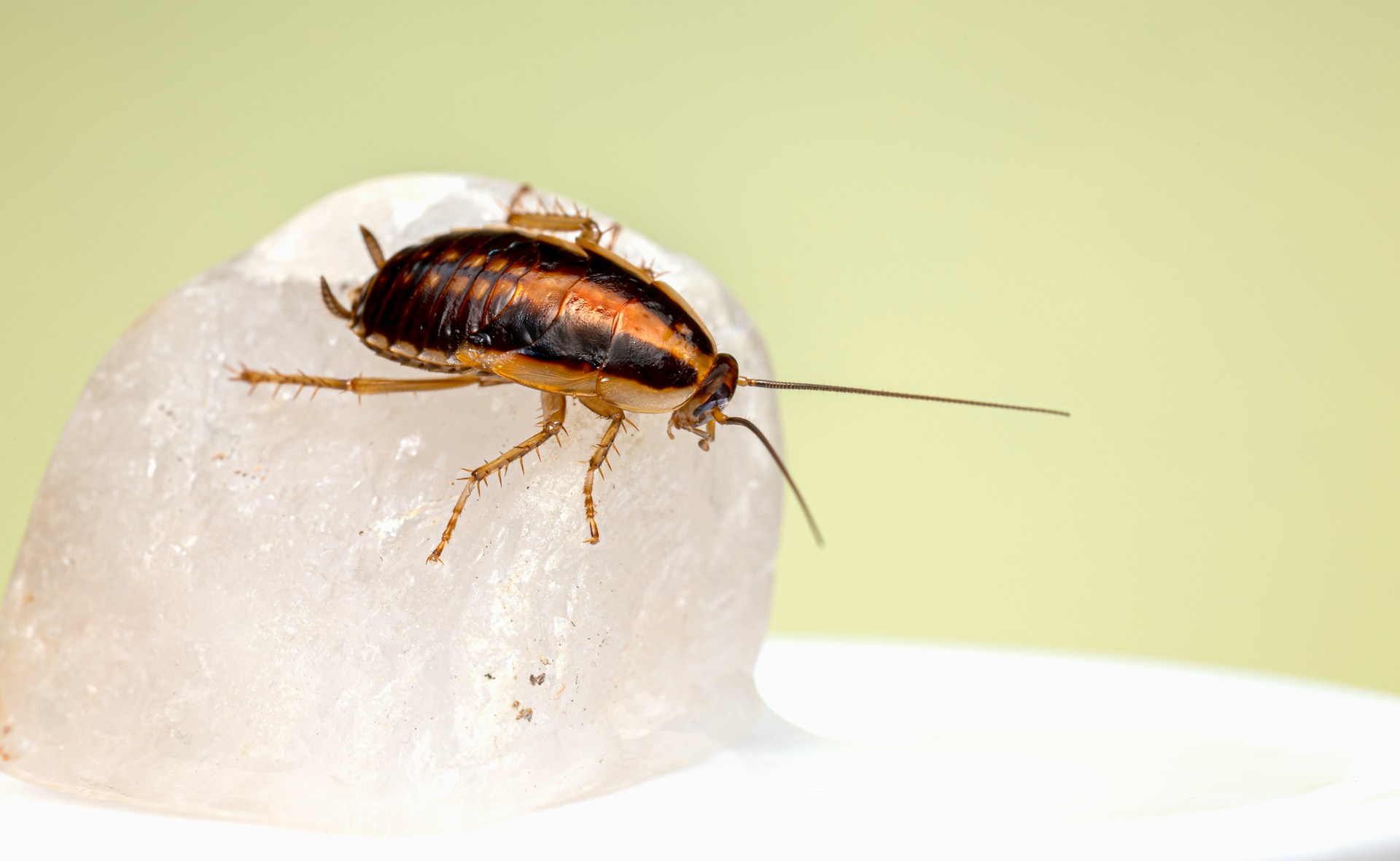
Window Treatment & Styles
Where Do Cockroaches Come From and How to Keep Them Out
You're probably reading this because you’ve just seen a cockroach skitter across your floor. Or worse, you’ve seen more than one! This can be terrifying, especially if you're afraid of roaches. And now you're likely wondering where they come from, why they're in your home, or how serious the problem could be, right?
Whether you're battling a current infestation or just want to make sure your home never becomes a cockroach paradise, this guide will help you understand what attracts cockroaches, how to prevent them, and what to do if they’ve already moved in. So, where do cockroaches come from? Let's find out!
Key Takeaways
- Cockroaches often enter homes through small cracks, plumbing systems, and even items you bring inside, such as grocery bags, cardboard boxes, or used furniture. They can also migrate between apartments through shared walls and pipes.
- Cockroaches thrive in warm, moist environments with easy access to food, which means kitchens, bathrooms, and cluttered storage spaces are their favorite haunts.
- Signs of infestation include droppings, shed skins, musty odors, egg capsules, and live sightings, especially during the day.
- Prevention starts with cleanliness and sealing entry points, but persistent infestations often require professional pest control.
Common Cockroach Species
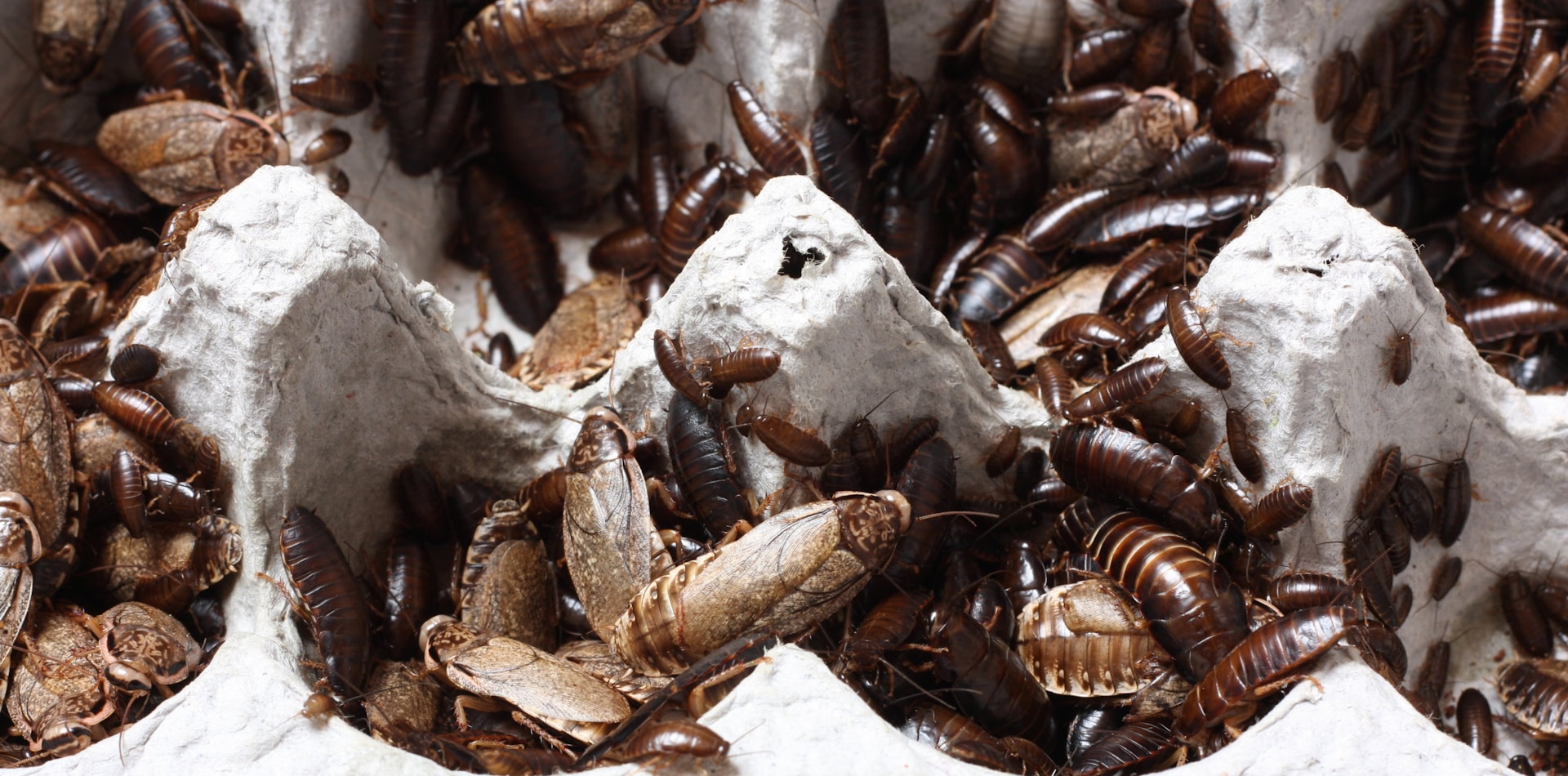
There are over 4,000 cockroach species thriving in different corners of our world, but most species are harmless. Only about 30 species are associated with human habitats. Of these 30 species, five are the most common in Canada, where they're also considered unwanted pests:
- The American cockroach, Periplaneta americana, a reddish-brown species, is the largest of the most common cockroach species, reaching 4 cm (1.6 in) in length and 7 mm (0.28 in) in height. These cockroaches move quickly, reaching speeds of up to 5.4 km/h (3.4 mph), and are opportunistic feeders. They have four wings and can fly (not cockroach nymphs, though, because they don't have wings yet).
- The German cockroach, Blattella germanica, is a smaller species, measuring only 1.1-1.6 cm (0.43-0.63 in). It is one of the most troublesome cockroach species, especially because these cockroaches reproduce faster than other species and are resilient to many pest-control measures.
- The oriental cockroach, Blatta orientalis, is another large cockroach species, reaching 29 mm (1.14 in) in length. These cockroaches are commonly found around human habitations and are known to transfer bacteria and viruses to food, dishes, and other objects they touch.
- The brown-banded cockroach, Supella longipalpa, is a small cockroach species, measuring 1-1.4 cm (0.4-0.55 in). These cockroaches are also quite common in houses, thriving in environments with a temperature between 25 and 33 degrees Celsius (77 and 91.4 degrees Fahrenheit).
- The Australian cockroach, Periplaneta australasiae, is similar to the American cockroach, although smaller, reaching only 2.3-3.5 cm (0.91-1.38 in) in length. It does not tolerate cold temperatures, but it can survive winters if it finds shelter indoors. Adult males are known to produce acoustic vibrations to attract mates. This species is not as common in Canada as other species.
How Do Cockroaches Get Into Your Home?
Cockroaches often enter homes through small cracks, gaps, and openings that are barely noticeable. These insects are highly adaptable and can squeeze through crevices as thin as a coin. The most common entry points are gaps around doors and windows, cracks in the foundation, holes around plumbing or electrical lines, and poorly sealed vents.
In apartment buildings or townhouses, cockroaches can also migrate between units through shared walls, pipes, and ceilings. If one neighboring unit has an infestation, it's very likely the problem will spread to surrounding apartments unless addressed promptly.
Moreover, don't forget that some cockroach species can live for up to a month without food, so even if there are no food particles in your apartment, they can survive if the space is warm (and, ideally, humid). Plus, imagine that just one female cockroach lives up to a year and can produce 300-400 eggs during its lifetime! No wonder infestations are so common!
Plumbing and Drain Systems
The plumbing system is one of the most preferred entry ways for cockroaches. They love pipes and drains, especially kitchen and bathroom sinks. These moist, dark, and secluded environments are ideal for them to hide and breed.
Food and Waste Sources
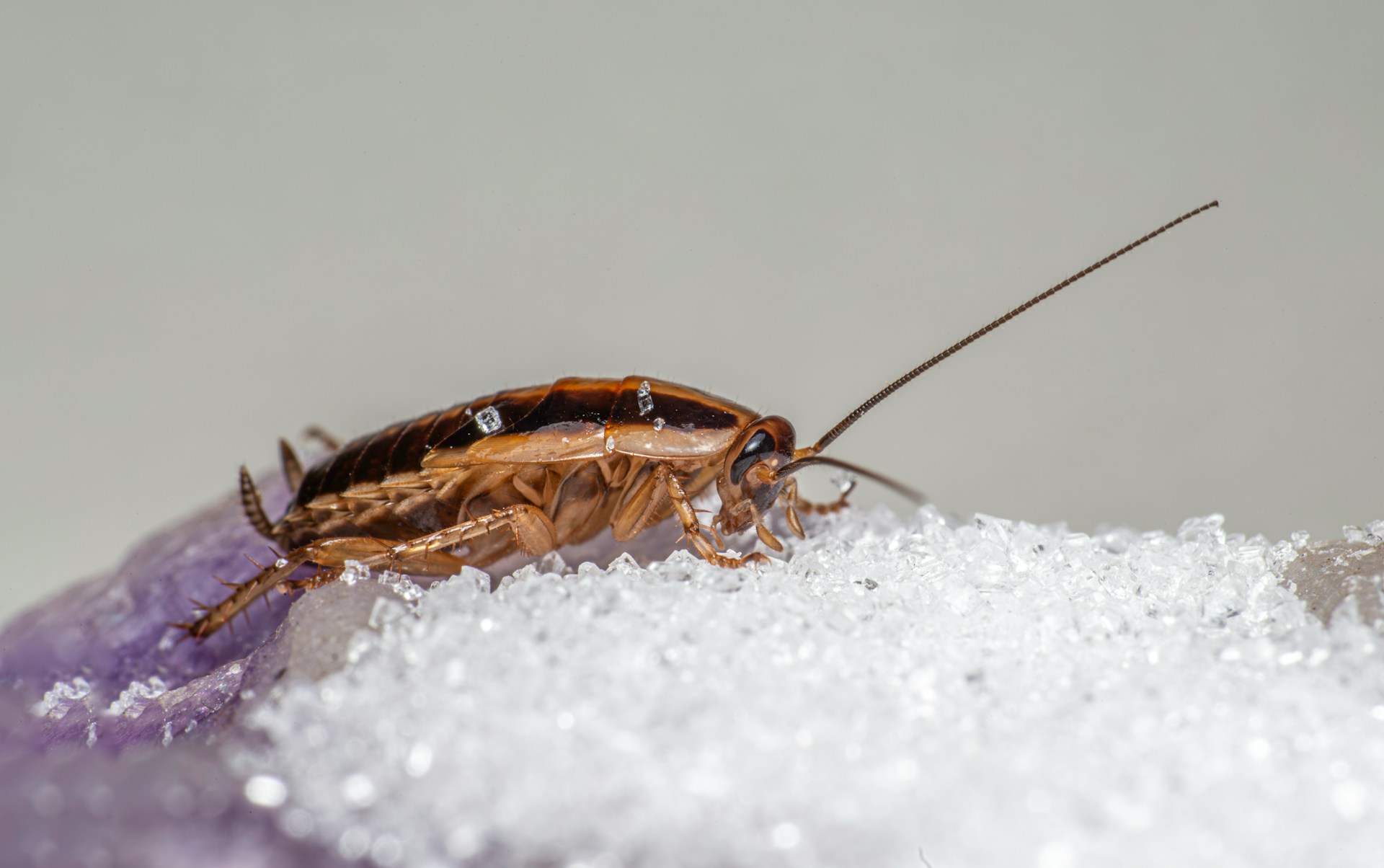
Cockroaches are scavengers by nature. Naturally, homes provide a steady supply of food, even if they're crystal clean. There are always some crumbs on the floor, a bit of grease behind the stove, or unsealed pantry items. And let's not forget about garbage bins, compost containers, and pet food bowls left out overnight.
Even a small overlooked spill can be enough to sustain a colony. Their ability to live off virtually any organic material, including paper, glue, and soap, makes them almost impossible to eradicate.
Once inside, cockroaches often stay close to food sources. They hide in kitchen cabinets, under sinks, behind appliances, and inside wall voids.
Clutter and Hidden Nesting Spots
Cluttered environments provide excellent hiding and nesting opportunities for cockroaches. Stacks of cardboard, paper, old clothes, or unused appliances, especially in basements, attics, or storage spaces, create warm and protected areas where cockroaches can breed undisturbed.
Inside kitchens, they often hide behind the refrigerator's motor (a warm environment), inside cupboards, and under sinks. In bathrooms, they nest behind toilets and vanities, especially where leaks or excess moisture are present.
Items Brought Into the Home
Surprise, surprise! You can also bring cockroaches into your home from somewhere else. They can catch a ride on used furniture, cardboard boxes, grocery bags, and even luggage! These pests are particularly good at hiding in tight spaces, so a single item from an infested area can introduce a new colony into your home. Once inside, they quickly try to find food and water and begin nesting.
What Attracts Cockroaches to Your Home
Cockroaches are drawn to homes primarily because they provide the three essential things these pests need to survive: food, water, and shelter.
- Food sources. Even small crumbs, grease splatters, or food residue left on dishes can lure cockroaches into a home. They are not picky eaters; they'll feed on any organic matter, including sweets, meat, cardboard glue, pet food, and even human hair or fingernail clippings.
- Water and moisture. Cockroaches are especially attracted to water. Leaky pipes, dripping faucets, pet water bowls, and damp areas under sinks or appliances offer the moisture they need to survive. That’s why they are frequently found in bathrooms, kitchens, and basements.
- Warmth and shelter. Dark, undisturbed, and warm areas provide ideal hiding and breeding grounds, as do cluttered storage areas, piles of newspapers, cardboard boxes, cracks in walls, and even electrical appliances (like behind the refrigerator or microwave). Cockroaches are nocturnal, so they seek quiet spaces where they can remain hidden during the day.
Signs of a Cockroach Infestation
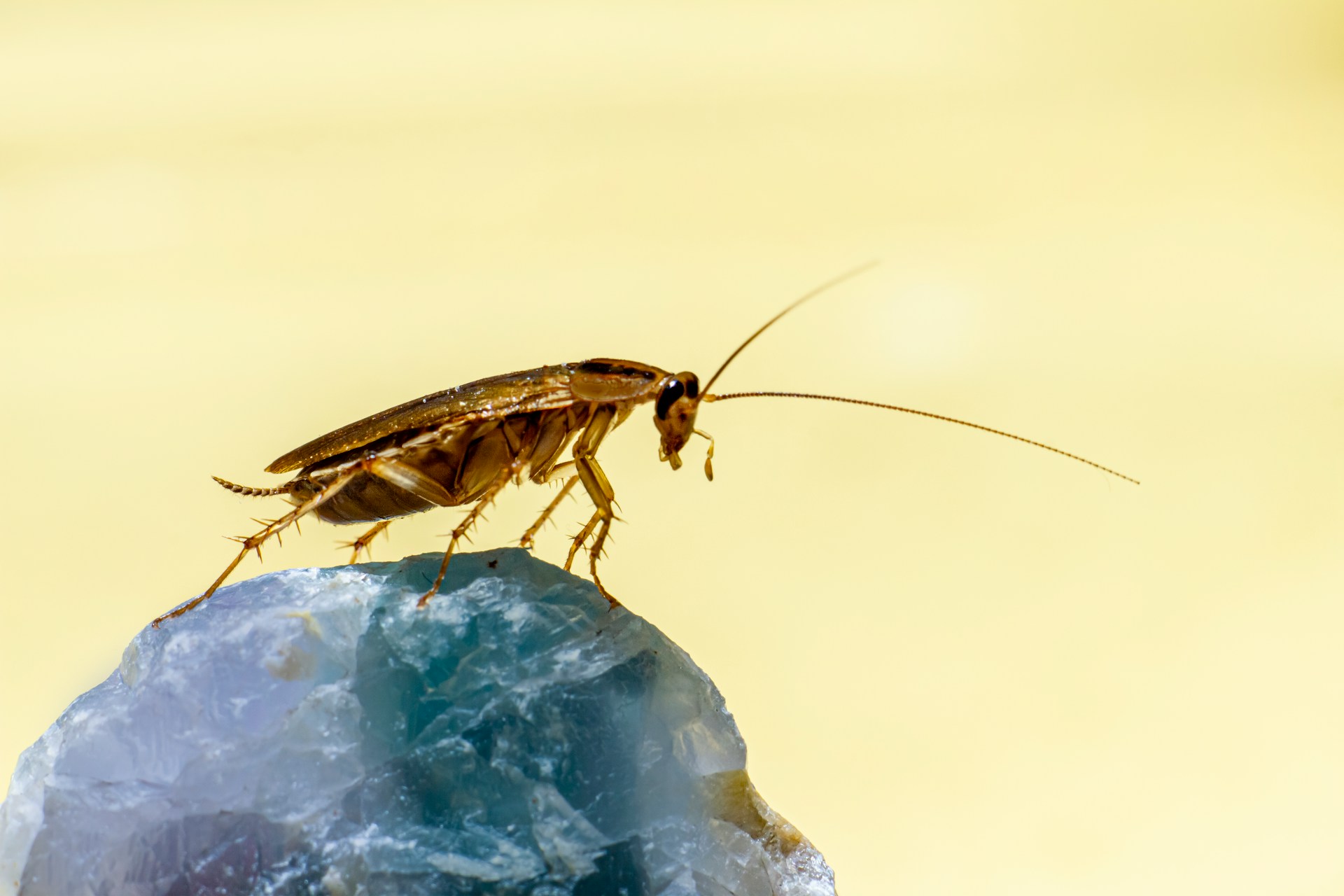
Cockroaches are incredibly good at hiding, but if you have katsaridaphobia, you'll definitely know they're there! You probably already know the most obvious signs of a cockroach infestation, but here's a reminder:
- Fecal droppings. If you see cockroach faeces, that's it. They're here. Cockroach faeces look like small, dark pecks or coffee grounds. They're often found near food sources, along baseboards, inside cabinets, or around appliances.
- Shed skins. Somehow, this sounds even more gross than cockroach feces! But believe it or not, after the eggs hatch, cockroaches shed their exoskeletons several times as they grow. The shed skin is light brown and looks like a papery shell.
- Unpleasant odor. A strong, musty, oily smell is common in homes with a large infestation. The scent comes from cockroach droppings and pheromones, and it intensifies as the population grows.
- Egg cases (oothecae). Cockroach egg cases, or oothecae, look like small brown capsules and may be hidden behind furniture, in pantries, or in corners. Each one can contain dozens of eggs, so they're a critical sign of a breeding population.
- Visible cockroach activity. Well, this is definitely the most obvious sign. While there's a chance that the specific cockroach you saw last night was lost and ended up in your apartment by chance, it's more likely that your house is also its home. Moreover, if you see cockroaches during the day, this usually means that the infestation is severe.
Here's a fun fact: some people actually love cockroaches! For example, the Madagascar hissing cockroach is actually kept as a pet!
Health Risks of Cockroach Infestations
Cockroaches are certainly an unpleasant sight. But, more importantly, they pose serious health risks since they share a close association with us. They're particularly risky for children, the elderly, or people with asthma or allergies, as they can cause food poisoning and not only. Studies show that cockroaches can transmit:
- Diarrhea
- Leprosy
- Dysentery
- Typhoid fever
- Salmonella
- E.coli
- Poliomyelitis
- Plague
- Cholera
...and others. More recently, it has been discovered that cockroach allergens can cause chronic symptoms that include skin rashes, coughing, wheezing, and sinus infections, among others. Scientists also established a link between cockroach allergens and asthma.
Keep in mind that it's not necessary for a human being or a pet to touch a cockroach to be at risk. These pests can contaminate utensils, cookware, food, and surfaces. However, in rare instances, cockroaches can bite humans.
Preventing Cockroach Infestations

It's ten times better to keep cockroaches out of your house than to have to deal with them. It's virtually impossible to seal your house completely against them, but you can definitely make it as uninviting as possible. Since they’re attracted to food, moisture, and shelter, the key is to eliminate access to these essentials. As such, here's what you can do to prevent infestations.
Keep Your Home Clean and Tidy
- Wipe down surfaces regularly, especially in the kitchen and dining areas.
- Clean up crumbs, spills, and grease immediately.
- Don’t leave dirty dishes in the sink overnight.
- Sweep and mop floors regularly, especially under appliances.
- Store food in sealed containers.
- Avoid leaving pet food or water out overnight.
- Clean pet dishes regularly.
- Make sure trash cans are tightly sealed and take out garbage frequently.
Fix Moisture Problems
- Repair leaky faucets, pipes, and drains.
- Use a dehumidifier in damp environments like basements.
- Wipe down wet areas in bathrooms and kitchens.
Seal Entry Points
- Use caulk to seal cracks and crevices in walls, floors, and around windows and doors.
- Install weather stripping and door sweeps.
- Check and seal openings around plumbing and electrical lines.
- Replace old windows and doors if they don't close properly.
- Install high-quality bug screens.
Declutter Your Home and Inspect Your House Regularly
- Get rid of old newspapers, cardboard, and unused boxes, as roaches love hiding in them. Plus, they absorb their odors, and other cockroaches can follow this scent like a trail.
- Avoid letting laundry or storage piles build up, especially in dark corners.
- Periodically inspect your home, especially behind appliances, inside cupboards, and under sinks.
- Use sticky traps in discreet locations to monitor activity.
What to Do If You Already Have an Infestation
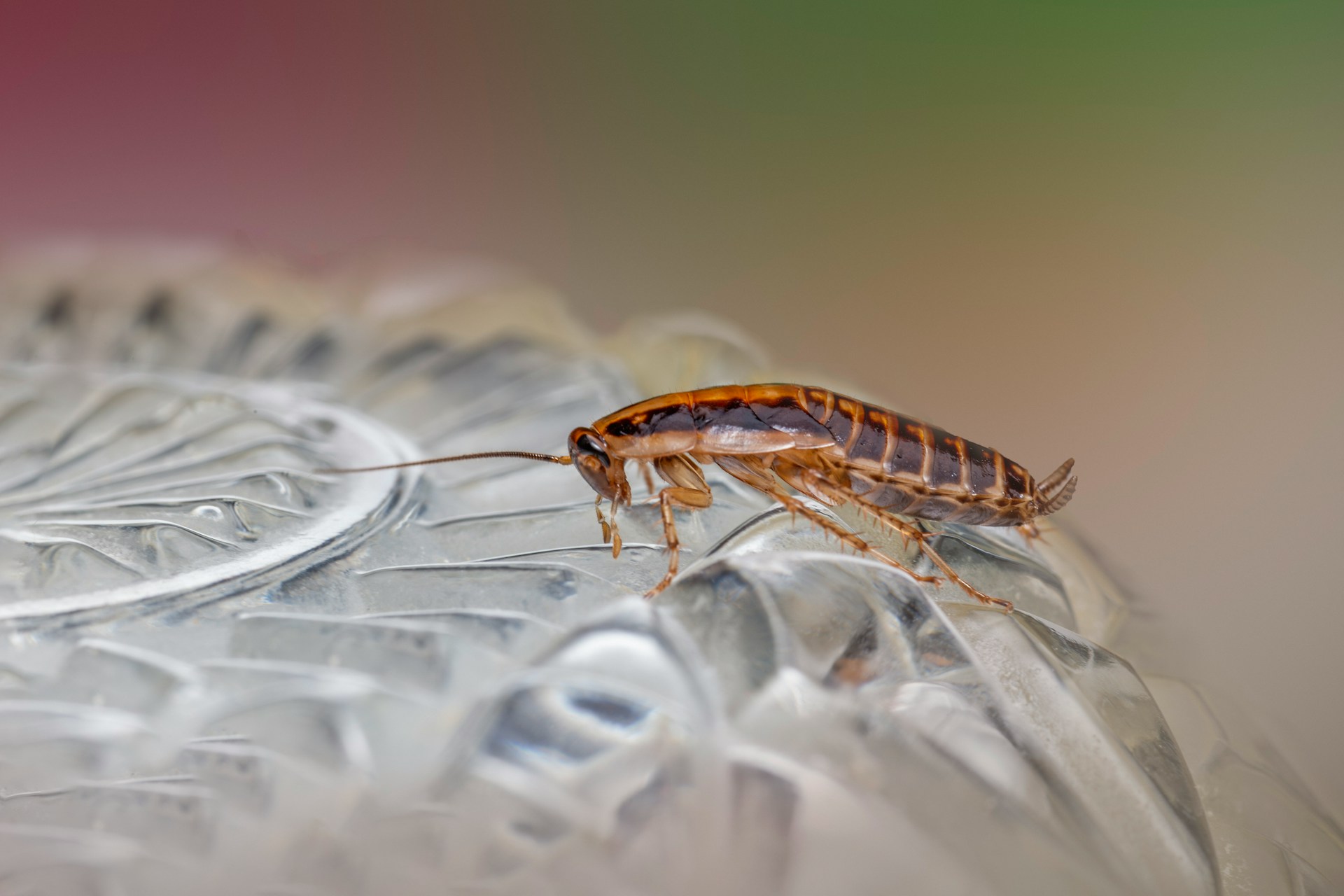
If cockroaches are already in your home, you’ll need to take targeted and consistent action to eliminate them. Here's what you can do:
- Identify the type of cockroach, if possible, because they behave and reproduce differently. For example, German cockroaches are usually found in kitchens and bathrooms. They are incredibly difficult to get rid of, so you'll likely need professional pest control services.
- Clean thoroughly and remove attractants. Clean, clean, clean. Every corner of your house. Hire a professional cleaning team, if needed. You have to remove every source of food to make your house unappealing to cockroaches. But this won't help you get rid of them for good. You'll have to take other measures as well.
- Use baits and traps. Your next step is to poison the cockroaches. You can use gel baits, as they're highly effective. You can place them in cracks, behind appliances, or near water sources. You can also use sticky traps, as they can help monitor the infestation and reduce the cockroach population.
- Apply Insect Growth Regulators (IGRs). Insect Growth Regulators basically disrupt the growth cycle. This way, nymph cockroaches do not reach sexual maturity, and the population cycle is disrupted. If you want to use IGRs, make sure to follow all label instructions.
- Seal hiding spots. Once you’ve reduced the population, begin sealing cracks, gaps, and holes to cut off hiding and nesting areas.
- Use natural remedies. Some people use boric acid, diatomaceous earth, or a mixture of baking soda and sugar as a low-toxicity option. These can work slowly but are best used alongside other methods.
- Call a professional exterminator. If the infestation is severe or keeps returning (they can actually develop resistance to certain pesticides), it’s best to hire a licensed pest control professional. They have stronger products and can identify hidden nests or entry points you might miss.
Upgrade Your Windows and Glass Doors to Bug-Proof Units!

Many people overlook one of the easiest and most effective ways to keep cockroaches (and other insects) out: improving the home’s barriers, especially windows, doors, and vents. And that's exactly what Magic can help you with.
Our units feature revolutionary technology that translates into better insulation. Magic windows and doors form an airtight seal when closed, leaving no gaps for cockroaches to sneak through. Additionally, our expert installers always make sure that the window is properly attached to the wall, with not unsealed edges.
And let's not forget about our incredible bug screen: it is fully retractable, which significantly improves functionality. When not in use, it remains hidden within a cartridge that is attached to the window frame.
This way, you can keep the bug screen hidden when the window is closed and enjoy unobstructed views. When you want to open your window and prevent those nasty cockroaches from getting in, you simply have to pull the screen out of the cartridge and, voila!, you house is fully protected!
Curious to discover more about Magic window and door technologies? Book a free consultation today!
Frequently Asked Questions
What keeps cockroaches away?
To keep cockroaches away, maintain a clean home by promptly cleaning food spills, storing food securely, reducing clutter, fixing leaks, and using scents like peppermint or lemon, which roaches dislike. In addition, seal entry points and keep moisture levels low.
How do you get rid of cockroaches?
To get rid of cockroaches, use methods such as boric acid, baking soda traps, insecticidal dusts, or professional pest control if the problem persists. Consistently clean and remove possible attractants to prevent reinfestation. Place baits and traps near hiding spots, and address all sources of food, water, and shelter to cut off their resources
Why is there a cockroach in my bedroom?
A cockroach in your bedroom is likely attracted by food crumbs, moisture, clutter, or warmth. It may have just entered through a window or its presence may indicate a larger infestation, especially if your room is close to a kitchen or bathroom. Even if you keep your bedroom clean, cockroaches may wander in searching for food, water, or shelter, sometimes entering through small cracks and crevices.
What are the common species of cockroaches found in homes?
The common species of cockroaches found in homes include the American, German, Oriental, and Brown-Banded cockroaches. Identifying these species can help in effective pest management.
What are the signs of a cockroach infestation?
The presence of droppings, egg casings, and body parts, along with sightings of roaches during the day, clearly indicate a cockroach infestation. It's crucial to address these signs promptly to prevent further spread.